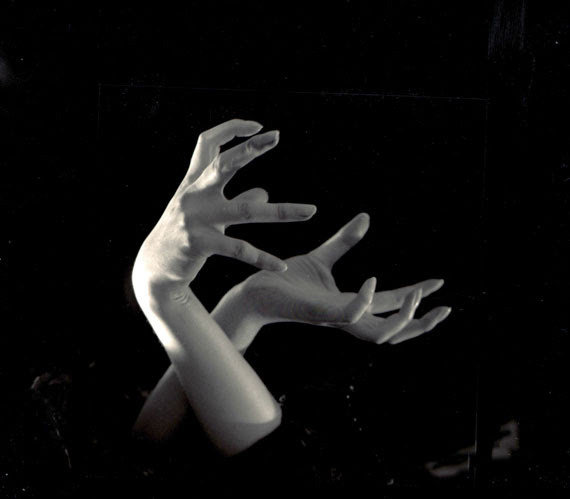Dance of Hands
dal 8/9/2015 al 30/1/2016
Segnalato da
Suse Byk
Trude Fleischmann
Emil Otto Hoppe
Lotte Jacobi
Dora Philippine Kallmus
Grete Kolliner
Rudolf Koppitz
Hans Robertson
Charlotte Rudolph
Otto Skowranek
Yva
8/9/2015
Dance of Hands
Das Verborgene Museum, Berlin
Tilly Losch and Hedy Pfundmayr in Photographs 1920-1935. This exhibition from the Bonartes Photography Institute in Vienna is the fruit of an interdisciplinary trail to explore the theme 'Dance and Hands'.

This exhibition takes its cue from an evening of dance performed by two soloists of the Vienna State Opera: Tilly Losch (1903-1975), who caused a stir in her roles as the female seductress, and Hedy Pfundmayr (1899-1965), who often played the principal boy. They created their "Dance of Hands" to be performed at the Salzburg Festival in 1927, where they were joined by the young dancer Harald Kreutzberg. It was to become their trademark, and as a choreography for hands it made history.
The "Dance of Hands" drew in its own inimitable style on the cult of hands that was then so popular. One reviewer wrote: "All one could see in the flood light were the two pale, slender hands, each apparently with a life of its own, engaged in a play where madness and contemplation, mysterious vice and painful longing were breathtakingly fused."
In the portrait and dance photography of the 1920s, considerable significance was attached to hands, interpreted as mirrors of the soul. Pictures of Tilly Losch and Hedy Pfundmayr, known around 1925 as "inseparable ballerinas" in both their private and professional lives, form the core in a display of images by very different Viennese photographers on the theme of dance and hands: Trude Fleischmann, who saw a kindred spirit in Claire Bauroff, Rudolf Koppitz, whose Electra series with Hedy Pfundmayr is still as captivating as ever, Grete Kolliner, who specialised in dance and drama photography; Madame d’Ora (Dora Kallmus), Vienna’s first society photographer, who captured Hedy Pfundmayr as Salome and in 1922/23 had recorded Anita Berber during her notoriously lascivious performances for "Martyrs" and "Cocaine".
In 1920s Vienna, where classical ballet was still in vogue, the rigid body language of the stage was modernised not only by Tilly Losch and Hedy Pfundmayr, but also by the Wiesenthal Sisters, Hilde Holger, Mila Cirul and Toni Birkmeyer, who brought their own free creation and expressive costumes to classical works such as "The Legend of Joseph", "Electra" and "Orpheus and Eurydice", and most notably to "Pratermizzi" and "Olympics Together".
During this same period, Berlin was a podium for creative solo dancers. At frequent matinées and soirées in the Blüthnersaal and Bachsaal, at the Schauspielhaus and Renaissance Theater, audiences watched with bated breath as Valeska Gert (1892-1978) performed her grotesques "Canaille", "Traffic", "Boxing" and "Death" and Harald Kreutzberg danced the strange figures known as "Irre Gestalten", as Hannes Krock mimed his "Goblin" and Mary Wigman filled the stage with her "Lament".
It was film-makers, but in particular photographers, who ensured that these avant-garde performances reached a wider audience: an impressive panorama of elegant and extravert dance has come down to us on postcards, both special artist’s editions and those bought by the general public to collect or send, and in illustrated magazines, colour supplements and trade journals. In most cases, the pictures were taken in studios, with dancers re-enacting their movements, rather than during the show.
For Berlin, the exhibition "Dance of Hands" put together by the Photoinstitut Bonartes in Vienna has been enlarged to include works by Berlin photographers, among them Suse Byk, who accompanied Valeska Gert with her camera and even filmed some performances; Lotte Jacobi, who had a particular fondness for dance and took ravishing pictures of Claire Bauroff, Rolf Arco, Harald Kreutzberg and Vera Skoronel in her studio on Joachimsthalerstrasse; Yva, who documented the mimed choreography of Krock and Garga; Hans Robertson, who specialised to great acclaim in shots of Harald Kreutzberg; and from Dresden the dance photographer Charlotte Rudolph, best known for her images of Mary Wigman and Gret Palucca. This show also reaches back a little further, to the 1910s and the origins of the movement for dance reform, featuring photographs by Otto Skowranek of "Prussia’s naked Venus" Olga Desmond (1890-1964), the scandalous nude dancer who poses here as a "Living Marble".
The highlight of the exhibition is a screening of the short silent film (around 1928) by Norman Bel Geddes, where Tilly Losch performs a version of the "Dance of Hands".
Image: Rudolf Koppitz, Handstudie Hedy Pfundmayr, um 1929, Ausschnitt nach dem Negatic, © Photoinstitut Bonartes
Opening: Wednesday, 9 September 2015, 7pm
Das Verborgene Museum
Schlüterstr. 70, 10625 Berlin



